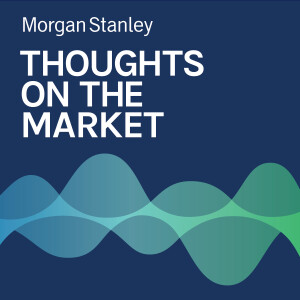
A strong El Niño event in the coming months could have negative effects for food inflation, commodities markets and climate change.
----- Transcript -----
Welcome to Thoughts on the Market. I'm Stephen Byrd, Morgan Stanley's Global Head of Sustainability Research. Along with my colleagues bringing you a variety of perspectives today, I'll discuss the global risks and impact from a potential El Niño event later this year. It's Thursday, September 7th at 10 a.m. in New York.
Over the last few months, as you've been doing your backyard grilling or taking a well-deserved summertime vacation, you may have heard a passing news reference to a climate pattern called El Niño. And although I'm an equity analyst and not a meteorologist, I'm going to talk about El Niño today because it could have some significant impacts for investors.
To explain, El Niño refers to a warming of the ocean surface or above average sea surface temperatures in the central and eastern tropical Pacific. It's the counterpart to La Niña, which refers to the cooling effect of the same ocean surfaces. Essentially, El Niño and La Niña represent opposite extremes in the El Niño Southern Oscillation or ENSO. ENSO follows cyclical patterns that repeat at a 2 to 7 year cadence and tend to peak in the November to February window. Current conditions imply about a 70% probability that we could be facing a moderate to strong El Niño event later this year with a range of potentially significant impacts across regions and industries.
First, although El Niño starts in the Pacific equator area, it has a significant impact on global weather. El Niño tends to peak around year end, impacting global rains and temperatures. El Niño driven seasonal patterns in the U.S., Argentina and the Andes tend to be wet, while those in Southeast Asia, Australia, Brazil, Colombia and Africa tend to be dry. This dynamic creates conditions that move wildfires and hurricanes from the Atlantic into the Pacific area.
El Niño events also impact the global economy and the environmental, social and governance, or ESG, factors for businesses worldwide. More specifically, a moderate to strong El Niño in combination with the Russia-Ukraine war could impact food inflation, raising questions about the emerging markets central banks easing cycles. It could also impact trade and GDP in agro-related economies such as Argentina, India, Australia, Brazil and Colombia, among others. It may also impact several commodities, including sugar, grains, animal meal, proteins, electricity, lithium, copper, iron ore, aluminum and coal.
El Niño’s effects can be positive or negative for different sectors and regions. For example, El Niño tends to be a negative in emerging markets. In Latin America, given the size of the agricultural sector and the spillover effect of agriculture into other industries, growth could be affected significantly. The recession we expect in Argentina this year is partially driven by La Niña, which generated an unprecedented drought. We expect El Niño to help grain yields in Argentina and to provide significant positive base effects to GDP in 2024.
Finally, when it comes to ESG, El Niño can exacerbate climate change impacts and increase concentrations of greenhouse gasses. Since this is a global issue and impacts all sectors to various degrees, we believe investors should pay close attention. Furthermore, the humanitarian impact of El Niño lasts long after the phenomenon itself, be it through impacts on food security and malnutrition, disease outbreaks, disrupted basic services and sanitation or significant impacts on livelihoods around the world. Typically, extreme weather events hit the poorest communities the hardest.
Thanks for listening. If you enjoy Thoughts on the Market, please take a moment to rate and review us on the Apple Podcasts app. It helps more people to find the show.
More Episodes
 2023-12-21
2023-12-21
 2023-12-12
2023-12-12
 2023-12-07
2023-12-07
 2023-12-06
2023-12-06
Create your
podcast in
minutes
- Full-featured podcast site
- Unlimited storage and bandwidth
- Comprehensive podcast stats
- Distribute to Apple Podcasts, Spotify, and more
- Make money with your podcast
It is Free
- Privacy Policy
- Cookie Policy
- Terms of Use
- Consent Preferences
- Copyright © 2015-2024 Podbean.com





